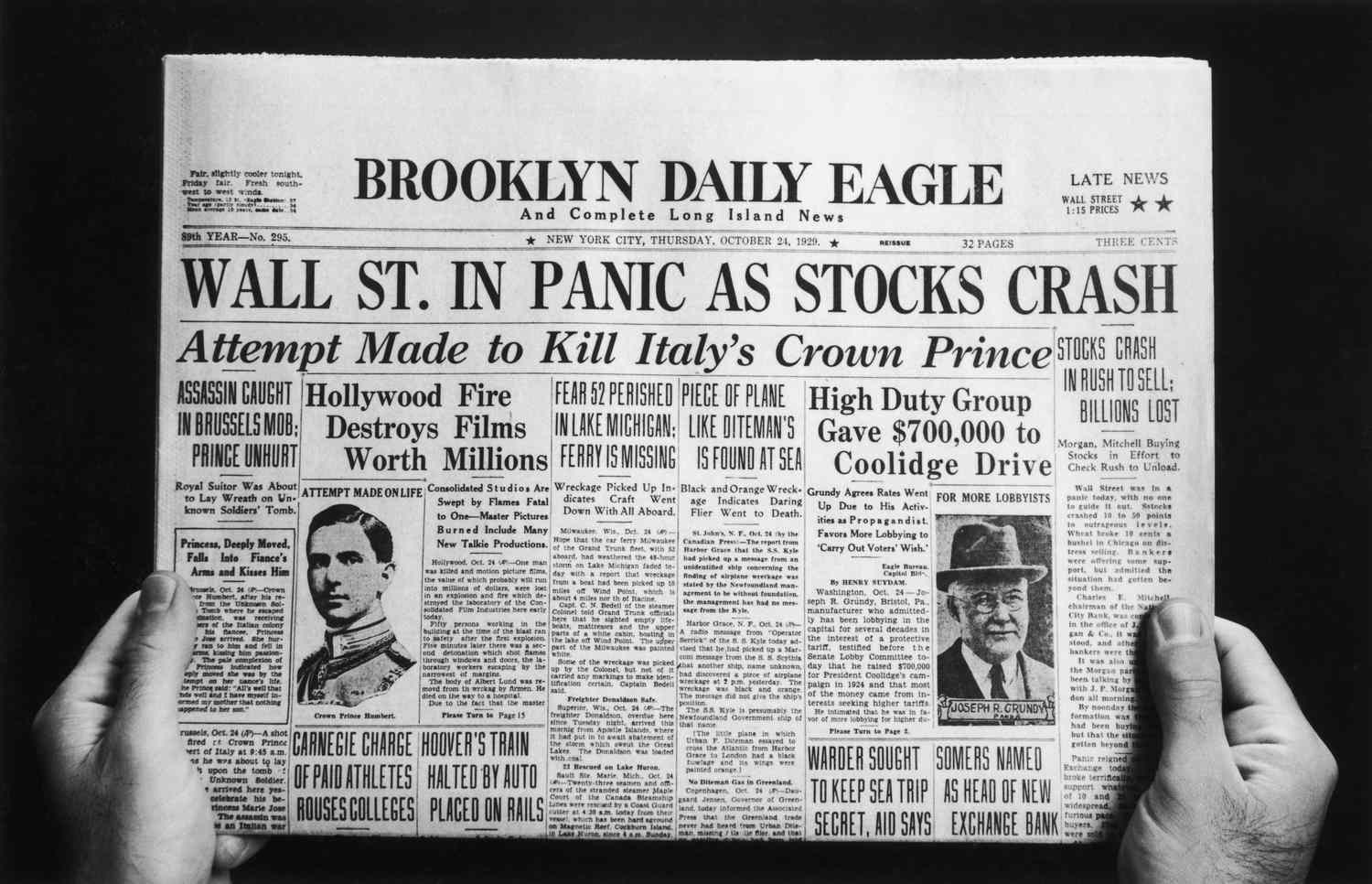The year was 1929—a time of economic prosperity, reckless optimism, and unforeseen catastrophe. The stock market crash that followed would plunge the world into the Great Depression, leaving an indelible mark on history. But what were the underlying factors that led to this unprecedented financial disaster? Join us as we unravel the mysteries surrounding the causes of the stock market crash of 1929.
The Roaring Twenties and the Economy’s Achilles’ Heel
The Roaring Twenties was an era of economic prosperity, technological advancements, and increased consumer spending. However, beneath the surface of apparent success, cracks emerged. Rampant speculation and buying stocks on margin fueled the stock market’s rise but exposed investors to risks. Income inequality widened the gap between the rich and the struggling working class, creating an unsustainable economic situation. Overproduction burdened the economy as companies produced goods in excess of demand. These factors set the stage for the subsequent stock market crash.
Signs of Trouble on the Horizon
Several warning signs indicated that the seemingly unstoppable economic growth had its limits. The agricultural sector experienced a severe crisis as farmers grappled with falling prices and mounting debt. Rural communities suffered greatly, and the impact rippled throughout the economy.
The industrial sector also faced challenges, with overproduction becoming a significant issue. As factories churned out goods at a rapid pace, demand began to wane. The market became saturated, making it increasingly difficult for businesses to sell their products and turn a profit. This imbalance would later play a significant role in triggering the crash.
Financial experts and economists voiced concerns about the unsustainable nature of the economic situation. Some warned of an impending market correction, cautioning against excessive speculation and the overvaluation of stocks. However, their advice largely went unheeded as optimism and the allure of quick riches prevailed.
Black Thursday and the Unravelling of Confidence
The stock market crash of 1929 began on October 24, famously known as Black Thursday. On that fateful day, the stock market experienced a sudden and dramatic decline. Panic ensued as investors rushed to sell their stocks to avoid further losses.
One of the key factors that intensified the crash was margin calls. Investors who had purchased stocks on margin faced margin calls from their brokers, demanding additional funds to cover the losses incurred. Unable to meet these requirements, many investors were forced to liquidate their positions, which further fueled the downward spiral of stock prices.
The panic quickly spread, and the effects of Black Thursday reverberated throughout the market. The following week, known as Black Tuesday, the market witnessed a devastating plunge, wiping out billions of dollars in wealth within a matter of days.
The Fallout and the Great Depression
The stock market crash’s aftermath was catastrophic, with staggering financial losses, bankruptcies, and soaring unemployment. Investors lost their life savings while businesses grappled to survive. The crash exposed flaws in the financial system, leading to bank failures and a credit crunch that paralysed the economy. Businesses struggled to access capital, hindering growth and job creation. The crash’s impact reverberated globally, causing a widespread economic contagion and severely affecting international trade.
Lessons Learned and Reforms Implemented
In response to the stock market crash, the government implemented reforms to prevent future crises. Notably, the Securities and Exchange Commission (SEC) was established in 1934 to regulate the securities industry and ensure market transparency. The Glass-Steagall Act separated commercial and investment banking to reduce risks and conflicts of interest. The crash’s lasting impact shaped financial policies, emphasising the dangers of speculation and the need for balanced economic growth.
How to Learn Stocks Trading?
If you’re eager to learn the art of stock trading, enrolling in a stocks trading academy like Queensway Academy can be a game-changer. These academies provide comprehensive education on the basics of stocks trading, risk management, different trading strategies, practical tools, and techniques. They offer valuable resources, expert guidance, and a supportive community of fellow traders. By gaining knowledge and skills through a stocks trading academy, you’ll be equipped to navigate the stock market with confidence, make informed trading decisions, and increase your chances of achieving trading success. So, seize the opportunity to learn from experienced professionals and take your stock trading journey to new heights.
Conclusion:
The stock market crash of 1929 serves as a cautionary tale, reminding us of the dangers of unchecked speculation, income inequality, and overproduction. It was a catalyst for significant reforms in the financial system, aimed at preventing similar crises in the future. As we navigate the present-day financial landscape, let us not forget the lessons of the past. By understanding the causes and consequences of the 1929 crash, we can build a more resilient and stable future.
